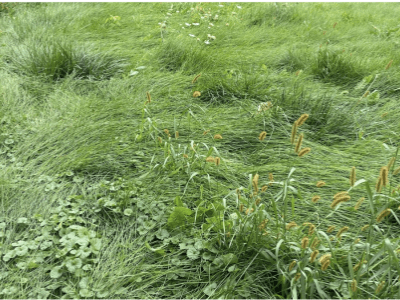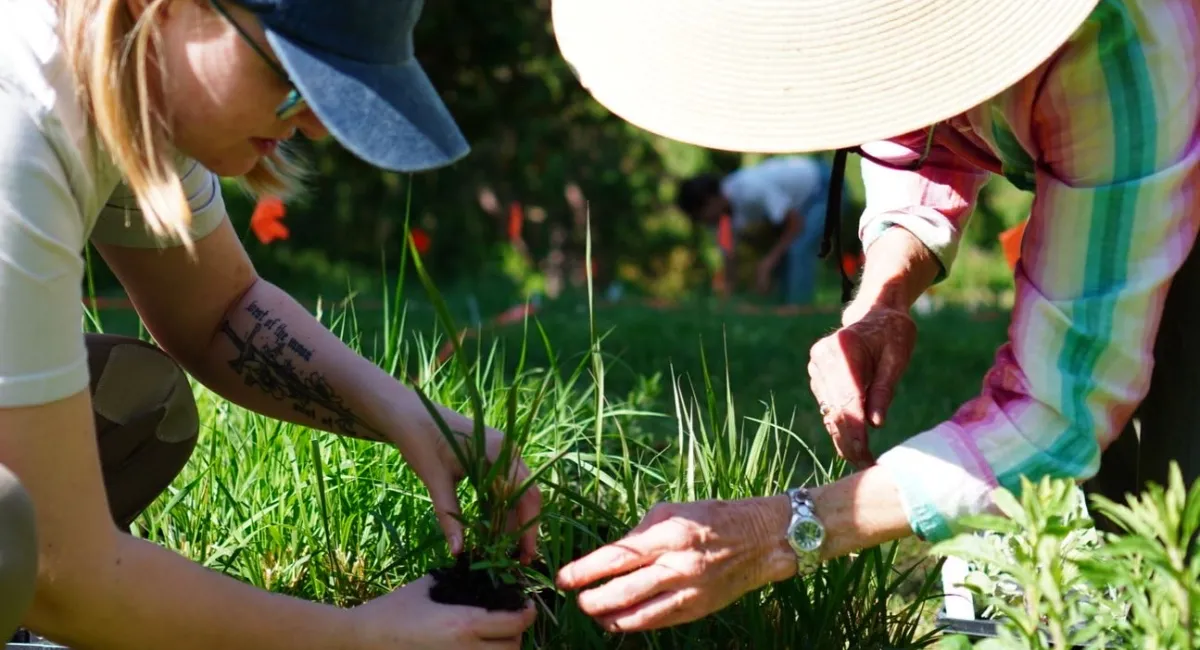The trouble with lawns
Doug Tallamy says it best in this article from Homegrown National Park: lawns fail at all four universal ecological landscape goals.

- They don't support a diversity of pollinators throughout the season
- They don't provide energy that moves up through the food web (e.g. diverse native plant “caterpillar foods” eaten by caterpillars fed to baby birds)
- They don't manage our watershed footprint
- They don't remove significant carbon from the atmosphere.
Additionally, few of the flowering plants encouraged by the ‘No Mow May’ initiative, such as the dandelion, support North American native bee populations. This, and more, is explained by Sheila Colla (York University) in this article from Rewilding Magazine.
Every time we plant a native perennial that nourishes specialist bees, we have helped all local pollinators, for generalist bees can use those plants as well. Every time we add a native oak, willow, cherry, birch, cottonwood, alder, maple, etc. to our yard, we...increased the ability of our yard to support breeding birds by supplying the host plants for the caterpillars on which those birds rely.
Looking for a plant list?
Visit our selection tools page for ground-cover and lawn alternatives plant lists.
Ecologically sound “lawn-like” alternatives being trialed:
- Scientists in the Chicago area are researching plots of different lawn grasses and low prairie and meadow species. Because Chicago and the Champlain Valley are in the same ecoregion, these findings will be transferable.
- This visually attractive affiliate website by scientist/artist Liz Kozik distills this research into easily readable graphic stories. Check out all six tabs in the upper right corner!
- Here’s a useful graphic that compares the five lawn alternatives that are being tested.
- The Cornell Botanic Gardens created a quarter acre native lawn demonstration site in 2009 which they continue to monitor. This 30 minute YouTube video explains their process and the natural communities that inspired their plant choices, which are similar to those in the Champlain Valley.
- Grow Wild is trialing lawn alternative plantings in the southeast sandy lawn of Burlington’s Lakeview Cemetery in partnership with Burlington Parks Recreation and Waterfront. We have been inserting small plants into the existing lawn, encircling them with small rings of wood chips, and monitoring their growth.
Some Additional References:
- The Restoration Science Center at SUNY ESF created a pocket guide, Converting Lawns to Meadows Pocket Guide, with helpful weed ID photos and useful tips.
- Native lawn alternatives species list created by Dan Jaffee Wilder, formerly of Native Plant Trust and now Ecological Director at Norcross Wildlife Foundation.
- Wild Seed Project’s Anna Fialkof offers an overview of established lawn alternative sites including useful native plant species for New England in this YouTube video.
- Native Plant Trust’s Here's How to Replace Your (Really Boring) Lawn drop-down tab.
Check out our Where to Add Habitat section, and watch this clever New York Times video: How To Fall Out of Love With Your Lawn.

